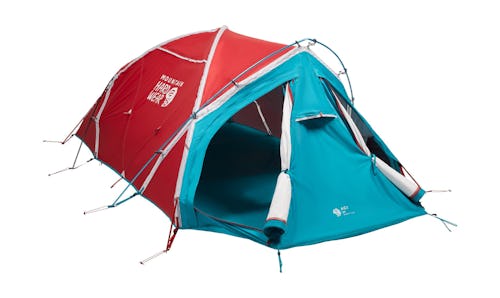
We’re going to come right out and say it: The idea of separate “three-season” tents for the spring, summer, and fall, and “four-season” tents which can handle year-round is wrong. As a new camper looking to buy their first shelter, those terms can make things pretty confusing. Tents don’t really work like sleeping bags, each with their own temperature rating and specific use-case. A four-season tent might not actually be comfortable in all four seasons. And more often than not, a three-season tent will be just fine in the winter. Understanding where each fits into your camping kit can both make you a happier camper, and it can save you a lot of money.
What is a four-season tent?
A three-season tent is designed to minimize moisture, protect you from rain, and ventilate well. A four-season tent should do all the same things, but it has a particular focus on protecting you from not only inclement weather but extreme weather like heavy snow and strong winds. Contrary to what many people think, a four-season tent really isn’t designed to insulate you. It may do some of that, simply by nature of being well fortified and good at trapping your warm air inside. But if you’re camping in the winter, most of your insulating will come from your clothes and sleeping bag, not your tent. That means a three-season tent is perfectly “warm” for cold-weather camping.
What really sets a four-season tent apart is how it handles bad weather. Compared to three-season tents, most four-season shelters are designed with stronger poles and fabric, and a burlier design. They’re almost always heavier for that reason, but it also means they can stand up to the weight of snow on top of the strong winds that you often find in more alpine winter environments.
Not-so four-season
If you do hope to occasionally overnight in the alpine where a true four-season tent is required, will buying just one four-season tent get you through all four seasons? Technically, it might, but it won’t be as comfortable as having two separate tents. The heavier materials that these burlier tents are made of, and a design that’s focused on deterring strong winds, means four-season tents are typically not as breathable as a summer tent. A winter tent on a summer night could get clammy and damp inside more easily, and you won’t be able to peel back the fly to let some air in.
The designers of four-season tents might also save weight by making the tents impervious to snow, but lack the burly membrane that makes them fully waterproof — a problem if you end up out in the rain like you might during the summer.
Winter in a three-season tent
If you’re not expecting dumping snow or strong winds, odds are you’ll be perfectly fine in a three-season tent during the winter. Remember, a tent isn’t designed to keep you warm. Which means even for cold trips with placid weather, a three-season tent will be all the shelter you need. Most beginning winter campers aren’t headed into the alpine or outside in poor weather. Instead, you’re probably headed to the same places you went summer camping: protected areas in the trees and with, ideally, good weather. The tent you already have is probably just fine for that, even if it’s cold and you’re planning on setting it up on top of snow.
Keep in mind, not every three-season tent will work equally well in the winter. Some ultralight models might not have floor fabrics waterproof or tough enough to withstand sleeping on snow, and tents that are supported by trekking poles might have a hard time with even a small amount of falling snow. These tents are the best options for breaking into winter camping without breaking your bank.
Input may receive a portion of sales if you purchase a product through a link in this article. We only include products that have been independently selected by Input's editorial team.

The REI Co-op Grand Hut 4 is about as stable and comfortable as you’ll find in a tent, which makes it the perfect base camp for even winter camping. It’s heavy at over 14 pounds, so you’ll only want it when you can drive right up to camp, but in exchange you get near-vertical walls and a 75-inch peak height, meaning you can basically stand up inside. Burly materials and poles mean it will protect you just as well in the winter as it does in the summer.
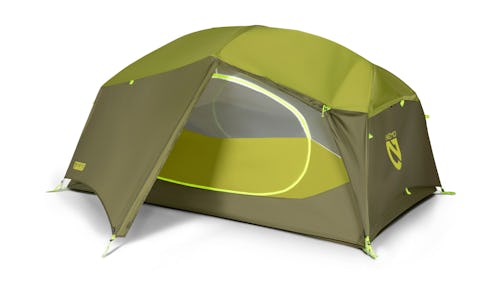
Somewhere between a lightweight car camping tent and a sturdy backpacking tent, the NEMO Aurora 2P is a great introduction to carrying your tent on your back, but durable materials mean it’s also strong enough to hold up to some winter use. Steep side walls give you ample shoulder room when you’re hanging out inside, but be wary of strong winds.

Winter camping inevitably requires more gear: more clothes, bigger sleeping bags, and more. The Big Agnes Blacktail Hotel 2 features an extended vestibule to make it easier for you to keep all that stuff at hand and protected from the elements. A simple pole structure and durable materials mean it sheds snow well and can handle light wind.
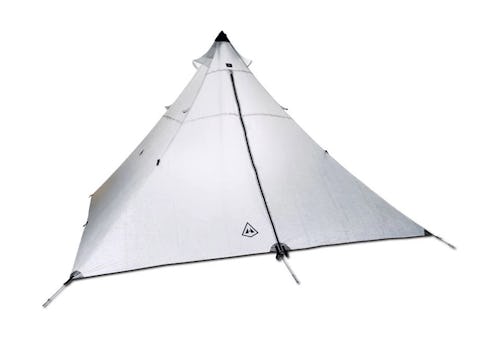
Who says a tent needs a floor? If saving weight is your focus, it definitely doesn’t. The Hyperlite Mountain Gear Ultamid 4 uses incredibly light Dyneema fabric to create a super simple floorless pyramid, held up in the center by your trekking poles. The result is a 1.44-pound football that works as well in the summer as it does during the winter for sheltering a group of people. Use a closed-cell foam sleeping pad to insulate you from the ground.
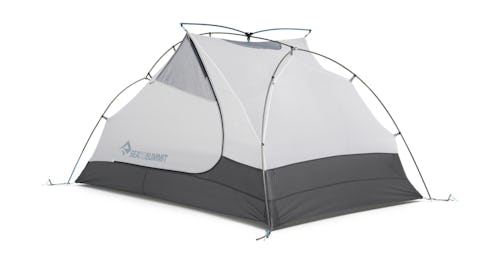
The Telos features a more waterproof floor and thicker internal fabric to block drafts than other three-season tents but, at four pounds, is still light enough to make it on all but the stingiest summer backpacking trips. A bonus: When it’s snowing or raining, you can set up the fly before the body, keeping the inside of the tent dry until you crawl in.

The North Face Mountain 25 is about as traditional a four-season tent as you’ll find, for good reason. Double walls add durability and breathability, a low-profile domed architecture deflects wind, two doors make it easy for either inhabitant to escape, a big vestibule makes it easy to cook meals without going out into the elements, and a plethora of guy-out points on the fly help you secure it to the mountain.
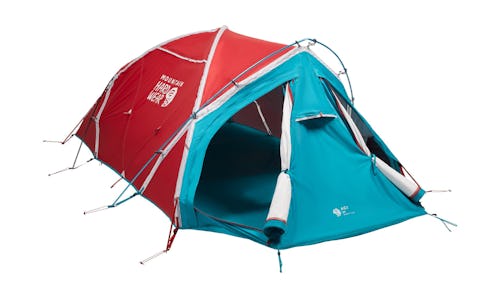
When the wind and snow are really ripping — like when you’re on a high altitude mountaineering expedition — a super strong, low-profile tent like the Mountain Hardwear ACI 3 is your best shot at staying protected. This tent is single-walled, which makes it easier to set up and surprisingly light for a 4-season tent. A lot of thought goes into the architecture of tents like this to ensure they won’t implode from heavy snow or wind.







